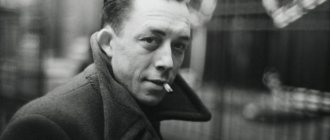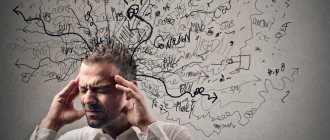Psychology of behavior: definition of the concept
Behavioral psychology is a field of knowledge that connects a person’s actions with his psychological characteristics. We can say that the actions and reactions of an individual visible to others reflect his inner world.
Familiarity with this area of knowledge of psychology makes it possible to draw a psychological portrait of an individual based on the actions and deeds of an individual, and draw conclusions about his character traits or intentions. Knowing what a particular person is like, you can predict her actions in certain situations.
It is important to understand that the concept of “behavior” includes absolutely all manifestations and characteristics of human activity. This concept includes actions in relation to:
- to other people;
- to things;
- to yourself;
- to animals and nature;
- to situations;
- etc.
When assessing the behavioral characteristics of an individual, attention is paid to:
- gestures: speed and direction of movements of arms and legs, body position, tilts and turns of the head, gait, posture;
- facial expressions: movements of the facial muscles, including a smile, gaze, movement of the eyebrows and frontal muscles;
- emotions: speed of occurrence, appropriateness of reaction, strength and methods of manifestation;
- voice: speed of speech, timbre and pitch, tone, sudden hoarseness, etc.
Knowing the language of gestures and facial expressions, they can be perceived as messages about the internal motives of the interlocutor. Based on this assessment of various behavioral manifestations, we can draw conclusions about the following things:
- is the interlocutor telling the truth or lying;
- whether his intentions are serious;
- is he happy here and now;
- attitude towards the topic of conversation and the speaker;
- mood;
- is the individual confident or shy, etc.
To draw correct conclusions about a person, you need to analyze her actions in a complex manner.
The meaning of such an analysis is based on the complexity of the human personality: it is a symbiosis of the physical and mental. These parts are inseparable. And what a person feels or thinks will unconsciously affect his actions: more or less depending on the level of self-control.
And since physiologically people are still very similar to each other, their reactions to similar stimuli will also be similar in many ways.
There are many psychological schools and directions and they substantiate this relationship in different ways. Some say that human actions in various situations are influenced by biological factors: genetically determined innate physiological characteristics (reaction speed, its quality). Others believe that behavior is simply an element in the stimulus-response chain. And most of these ligaments in an adult are not congenital, but acquired.
You need to understand that each person is individual and it is easiest to judge the motives of people you know well by their actions.
Definition
An action as a constituent unit of activity, a completed act, which is characterized by goal orientation and arbitrariness. Action is not the same as an ordinary behavioral act, dictated by impulse or habit and entirely dependent on the current situation.
An act is defined as a specific action, conscious, requiring moral self-determination from a person. By performing actions, a person realizes himself as an individual in front of himself, the environment, and nature. Let's take a closer look at the difference between an act and an action.
Individual characteristics of human behavior
Not everyone can assess the individuality of a stranger and draw correct conclusions about his character based on his actions. This is probably not 100% accessible even to a professional. Because despite some common physiological characteristics, all people have different life experiences.
Thus, sudden alertness during a conversation does not always mean that the reason is in the topic under discussion and the interlocutor’s reaction is conscious. It could be a completely different third-party factor.
If the experience of each individual is unique and it is not so easy to draw conclusions about his picture of the world, then with the biological component everything is a little simpler. Numerous studies make it possible to classify people into groups according to various criteria. This simplifies the assessment task.
Human Temperament
The most popular classification of temperaments in this area. The grouping criteria are the following physiological characteristics of a person:
- speed, strength, pace of mental processes and reactions;
- level of excitability and inhibition of the nervous system.
Three areas of manifestation of temperament can be distinguished:
- General activity: determined by the intensity of human interaction with the social and natural environment. Varies from apparent lethargy and passivity to activity and quickness of action.
- Motor and motor activity: reflects the speed and sharpness of movements, tempo of speech. It is also described through talkativeness or silence, mobility or slowness.
- Emotionality is expressed by how quickly the emotional state changes and the level of susceptibility to emotional stimuli.
Depending on the combination of these characteristics in a particular person, 4 types of temperament are distinguished:
- Choleric is passionate, fast, impetuous, but with unbalanced nervous processes, quick and sudden mood swings.
- A sanguine person is mobile, with active facial expressions, lively and hot, with frequent mood swings, but with a balanced nervous system, unlike a choleric person. Productive if he enjoys his work and is cheerful.
- A phlegmatic person is stingy in expressing emotions and feelings, calm and unhurried, persistent in work, but calm and balanced.
- A melancholic person is easily vulnerable, constantly worries about various events and does not control his feelings.
The actions of an individual are also strongly influenced by his character, motives and attitude towards people, which is also the result of upbringing and the influence of society.
Components of an action
Each action consists of several components:
- Motive. That which directs a person to perform a certain action.
- Target. Every action pursues a specific goal. The peculiarity of such a goal is manifested in its influence on the interests of other people.
- Subject of transformation. Every action has an impact on a person's personality or his environment, which distinguishes it from an action.
- Facilities. That is, the ways in which a certain action is performed: a word or a deed.
- Process. The act itself.
- Result. Changes that have occurred to a person or his environment.
- Grade. Correspondence of the result to the initial motives.
Actions are not just actions performed by a person every day, but actions that have certain motives and influence the individual or society.
Human behavior in a dangerous situation
How a person acts is very much determined by the circumstances of a particular situation. If an individual is in a familiar environment, then conscious stimuli will prevail in his actions. While danger and emergencies awaken primitive instincts and reactions.
People at such moments are often little able to consciously control their actions.
Mental disorders and behavior of people caught in an emergency zone are caused by two groups of factors:
- Factors of direct threat to physical health and life: explosions, building collapses, radioactive contamination, fires and other consequences of disasters and natural disasters. The combination of physical damage, painful shock and fear provokes mental disorders.
- Conditions for lack of information: ignorance of the scale of the disaster and lack of reports about the fate of relatives and friends. Here, mental state disorders are not associated with physiological damage, but can cause them.
Depending on the stage of the emergency, a person may experience behavioral disturbances of various types.
Violations by stages of emergency
In the first 5 hours of a natural disaster, people, as a result of the resulting stress, may first experience fear, panic, confusion, stupor of varying degrees, and a lack of understanding of the meaning of what is happening. A person’s consciousness, moral norms and restrictions are turned off, he is guided by instincts: first of all, self-preservation.
Characteristic manifestations of stress are:
- Speeches. An increase in tempo, strength and sonority, and hesitation is present, is observed with a normal type of fear reaction, and fragmentation, meaningless phrases or a complete absence of speech are observed with a complex one.
- In memory. The victim seems to unconsciously defend himself from all the horror of the situation and then can barely remember what happened and how;
- Perception of time: a few minutes seem like an eternity;
- Motor. With a simple reaction of fear, movements are concentrated, forces are mobilized to the maximum, and with pathological complex reactions - from panicked flight to complete numbness.
Also characteristic is a narrowing of consciousness and self-removal from the terrible reality, there is selectivity of behavior and impaired ability to independently make rational decisions.
At the stage of rescue operations, people often already experience fatigue and increased fatigue, turning into depression. Psychoses and neuroses are often present here.
The following psychoses can be observed in victims:
- Acute shock: stupor or flight, confusion of speech and consciousness.
- Reactive subacute:
- psychogenic depression - a state of depression turns into depression;
- hysterical depression - hysteria is replaced by depressive syndrome;
- paranoid psychosis – anxiety, restlessness, delirium;
- paranoid-halucinative syndrome - anxiety and restlessness are intensified by hallucinations;
- puerilism syndrome - stress manifests itself in the form of exacerbation of childish behavior.
During the period after evacuation, the following disturbances occur in people's behavior:
- Avoidance symptoms – a desire to distance yourself mentally and physically from memories of a natural or other disaster that has occurred, including avoidance of people, places, conversations and activities associated with it;
- psychological discomfort from the attacking flow of memories, emotions and images associated with the emergency;
- inhibition of emotions and reluctance to engage in favorite activities;
- a feeling of alienation from people or, on the contrary, dependence;
- increased unconscious reflexes: hypervigilance, readiness to defend (increased “Hit and Run” reaction)
- sleep disturbance, irritability, outbursts of anger;
- memory impairment and depression.
When communicating with such people, you should take into account that these deviations will be reflected in behavior. But this is a normal reaction of normal people. Therefore, if possible, you should not treat them as sick. and we need to show maximum understanding in order to return the victims to society.
Psychological properties of the crowd
In this case, a crowd means not just a gathering of a large number of people, but people united by a common center of attention, interests and emotional state. This could be a crowd of football fans, participants in rallies and demonstrations, fans and concertgoers of their favorite performers, etc. Depending on the type of crowd, different types of emotions may be inherent: aggression, fanaticism, heroism, selflessness.
Initially, a crowd is not characterized by the presence of common goals; it is mostly a spontaneous formation, guided by instincts and a leader.
The psychological characteristics of the behavior of any person in a crowd are somewhat similar to behavior in a dangerous situation. It is controlled primarily by instincts, not by consciousness. Only the reasons are different. In a dangerous situation, instinct is individual and rather determined by the needs of a particular person. Being in a crowd, an individual becomes, as it were, part of one huge biological organism - the “crowd”.
According to studies of this phenomenon in different countries, anyone is susceptible to the influence of the crowd as soon as they become part of it. And this does not depend on the initial cultural or educational level of the participant, his type of character or country of residence. All such crowds of people have common features.
The main features of the behavior of the “man of the crowd” are:
- increased impulsiveness of actions;
- decreased verbal interpersonal communication;
- the tendency to unconsciously imitate the behavior of leaders and quickly respond to their commands and calls;
- extreme categorical judgments and opinions;
- emotional instability, dependence of mood on others: rapid emergence of emotions and transition between their extreme manifestations (from anger to delight on command);
- high emotional arousal, which can be recognized by nervous movements, distracted gaze, frequent shouting of some cries or mottos;
- lack of ability to create: the crowd tends mainly to destroy;
- auditory or visual hallucinations may occur;
- tendency to cluster in denser groups;
- increased emotional and mental stress provokes seizures, convulsions or epilepsy in nervously ill members of the crowd;
- chaotic physical activity, psychomotor agitation, poor control of motor coordination, tendency to perform the same type of movements, increased aggressiveness;
- a tendency to understand and make extremely simple and primitive decisions: the “man of the crowd” is simply not capable of complex mental work and rational conclusions.
With all this, when a person is in a crowd, his individual character traits are erased, he actually merges with the crowd. The process is led by the crowd, and its element only unconsciously submits; it is temporarily deprived of its own views and values. He easily and without making a conscious decision crosses the line of his own moral values.
The intellectual abilities of each individual person in a crowd are obviously lower than such a person in ordinary life.
The Power of Morals
To understand the moral value of an act, it is necessary to first determine under the influence of what morality it was committed. Morality happens:
- "Good." Includes concepts such as respect, kindness, responsiveness, understanding, care.
- "Wicked". Which is based on the definitions of selfishness and selfishness.
And only moral standards can show a person that he should be guided by “good” morality. Understanding that immoral actions are condemned by society, a person feels the need to act honestly, be faithful, respect elders, act tactfully, thoughtfully and correctly. Therefore, a moral act is an action that has special moral value and is positively perceived in society.
This is the peculiarity of moral standards: to show a person what is a good action and what is bad.
What do psychologists say about this?
The psychological characteristics of human behavior are of deep interest to specialists. And various studies are being conducted on this topic. Here are some interesting facts about behavior:
- In a dangerous situation, the mobilization of a person’s physical strength often reaches such a level that he can lift and move record weights. In ordinary life this cannot be repeated.
- Being in a crowd, an individual practically does not control himself: he is controlled by general emotions and instincts. He can perform both heroic deeds and extremely criminal ones. Then such a participant in the events is not even able to understand how this happened.
- For a modern member of society, one of the very “dangerous” situations is the loss of a mobile phone. This can cause a feeling of panic that is comparable to the effect of clinical death.
- People become much more open and honest when they are tired.
- An individual’s actions can also be influenced by various pathological abnormalities in the development of the psyche and nervous system. This includes various addiction-related disorders. Today, addiction to social networks is officially recognized as one of the types of disorders in many countries.
- When a person speaks a non-native language, his speech, as well as his thoughts, become more structured and logical.
- The behavioral algorithms of men and women are also different. If women are more focused on emotional satisfaction with the process, then men in their actions are focused on the end result. Their subconscious motives: to win, to conquer, to get. And we shouldn’t forget this.
In conclusion, we can say that despite numerous studies, man has not yet been studied. And this applies to both the physiological side of a person and his psychological characteristics.
The problem of morality
When it comes to actions, the problem of morality always comes to the fore. What is a moral act? This is a responsible and conscious action that does not affect the free will and interests of other people.
In life, the concepts of morality and ethics inextricably follow each other. If we talk about morality, then this is the side of existence that is associated with human actions, practical and real action. By observing how others act, a person forms for himself a certain rule of behavior, which can be called morality.
A moral act always has a certain moral value. It is determined by the motives and results of the action taken.










